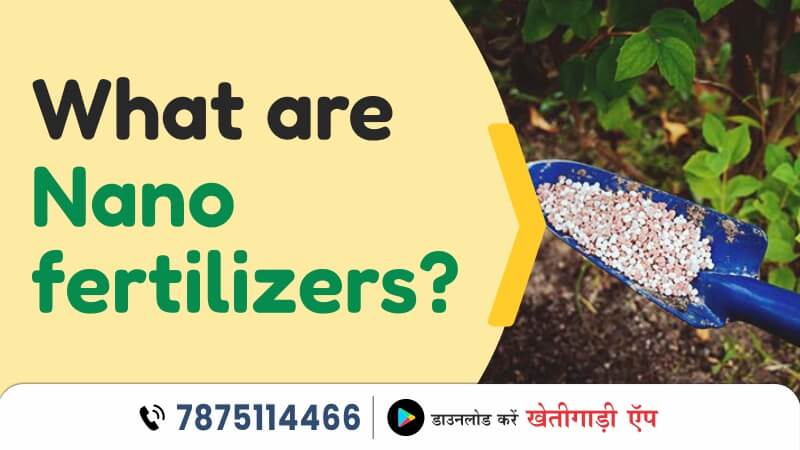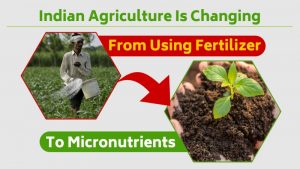Introduction:
Due to erosion, contamination of the environment, fertilizing, and careless irrigation, agricultural land is being lost day by day. However, in order to meet the demands of the expanding population and the needs of the burgeoning industry, agricultural productivity must be increased. In order to maximize production from each unit area, nano fertilizers have recently started to be manufactured.
Our studies demonstrate that nano fertilizers boost the efficiency with which plant nutrients are utilized, decrease soil toxicity, minimize the possible negative impacts of excessive chemical fertilizer use, and decrease the frequency of fertilizer application. Nano fertilizers are crucial to agriculture because they boost crop output, optimize nutrient utilization, and limit the overuse of chemical fertilizers. The presence of one or more macro- and micronutrients, the ability to be used frequently in tiny amounts, and the environmental friendliness of these fertilizers is their most crucial qualities.
With the aid of nanotechnology, traditional fertilizers, bulk fertilizer components, or extracts from various vegetative or reproductive portions of the plant, nano fertilizers are created or modified in order to increase soil fertility, productivity, and the quality of agricultural outputs. Totally bulk materials can be used to create nanoparticles.
Because the particles in nano-fertilizers are so small, they have a higher surface area, which gives the plant system more room to accommodate various metabolic processes that lead to the synthesis of additional photosynthesis. Because of their large surface area and small size, they are extremely reactive with other compounds. They are very soluble in a variety of solvents, including water. Nano-fertilizers have particles that are less than 100 nm in size, allowing for greater penetration of the plant from the applied surface, such as soil or leaves.
Nano fertilizers have advantages over conventional fertilizers
In comparison to conventional fertilisers, nano fertilisers have a number of benefits, including improved crop quality parameters and soil fertility yield, nontoxicity and reduced risk to people and the environment, lower cost, and higher profitability.
Nanoparticles improve nutrient utilization while lowering environmental protection expenses. Enhancement of the nutritional value of crops and the level of flavor. Iron should be used as efficiently as possible, and wheat grains should include more protein. increase plant growth through disease resistance and increase plant stability through anti-bending and deeper rooting of crops. also stated that nanotechnology might be used to produce balanced fertilization of the crop plant.
Effects of nano-fertilizers on plant growth metrics and seed germination. Numerous studies found that nano fertilizers had a considerable impact on seed germination and seedling development, demonstrating their impact on seed and seed vigor. Nano fertilizers can quickly penetrate seeds and enhance nutrient availability to growing seedlings, resulting in healthy plants with longer shoots and roots. However, if the concentration is higher than the ideal level, it may hinder plant germination and seedling growth.
Comparing nano ZnO to bulk zinc sulphate, more peanut seeds germinated and more roots grew. Soya bean germination has been shown to benefit from nanoscale SiO2 and TiO2 in a similar manner. reported greater seed germination, shoot length, and root length with nano fertilizer treatment compared to control or seeds not treated with nano fertilizer. With increased food availability, growing plants produce more dry matter, chlorophyll, and photosynthesis more quickly, which enhances plant development in general.
There have been three categories of nano fertilizers proposed:
1. Nanoscale fertilizer (nutrient-containing nanoparticles)
2. Nanoscale additives
3. Nanoscale coating: conventional fertilizers coated with or loaded with nanoparticles.
The release of nutrients may be slowed by coverings made of nanomaterials (like a nanomembrane), or a porous nano fertilizer may include a network of channels that prevent nutrient solubility. Although it is still in its early stages, nanotechnology is already being used in engineering and medicine.
The encapsulation of advantageous microbes that can enhance plant root health is another intriguing application of nanotechnology. These might consist of different bacteria or fungi that improve the availability of potassium, nitrogen, and phosphorus in the root zone. Additionally being investigated is the creation of nanobiosensors that will respond to particular root exudates.
Examples of potential designs for nano fertilizers:
Slow release: Over a predetermined length of time, the nanocapsule gradually releases nutrients.
Quick release: When a nanoparticle comes into touch with a surface, the shell quickly cracks (such as striking a leaf).
Specific release: When a specific chemical or enzyme is present, the shell is released in a precise manner.
Moisture release: When there is water present, the nanoparticle degrades and releases nutrients.
Heat release: When the temperature rises above a predetermined point, the nanoparticle releases nutrients.
Release of pH: Only under specific acidic or alkaline circumstances does the nanoparticle disintegrate.
Ultrasound release: An external ultrasound frequency ruptures the nanoparticle.
Magnetic release: When exposed to a magnetic field, a magnetic nanoparticle bursts (magnetic release).
For both medical and agricultural purposes, many of these nanotechnologies are still in the early stages of research.
However, you’ll be more aware of the direction this industry is going the next time you hear about nano fertilizers.
Visit the Khetiguru mobile application for more information on nano fertilizers, as well as the Khetigaadi website for information on tractors, tractor prices, tractor games, and tractor videos.




